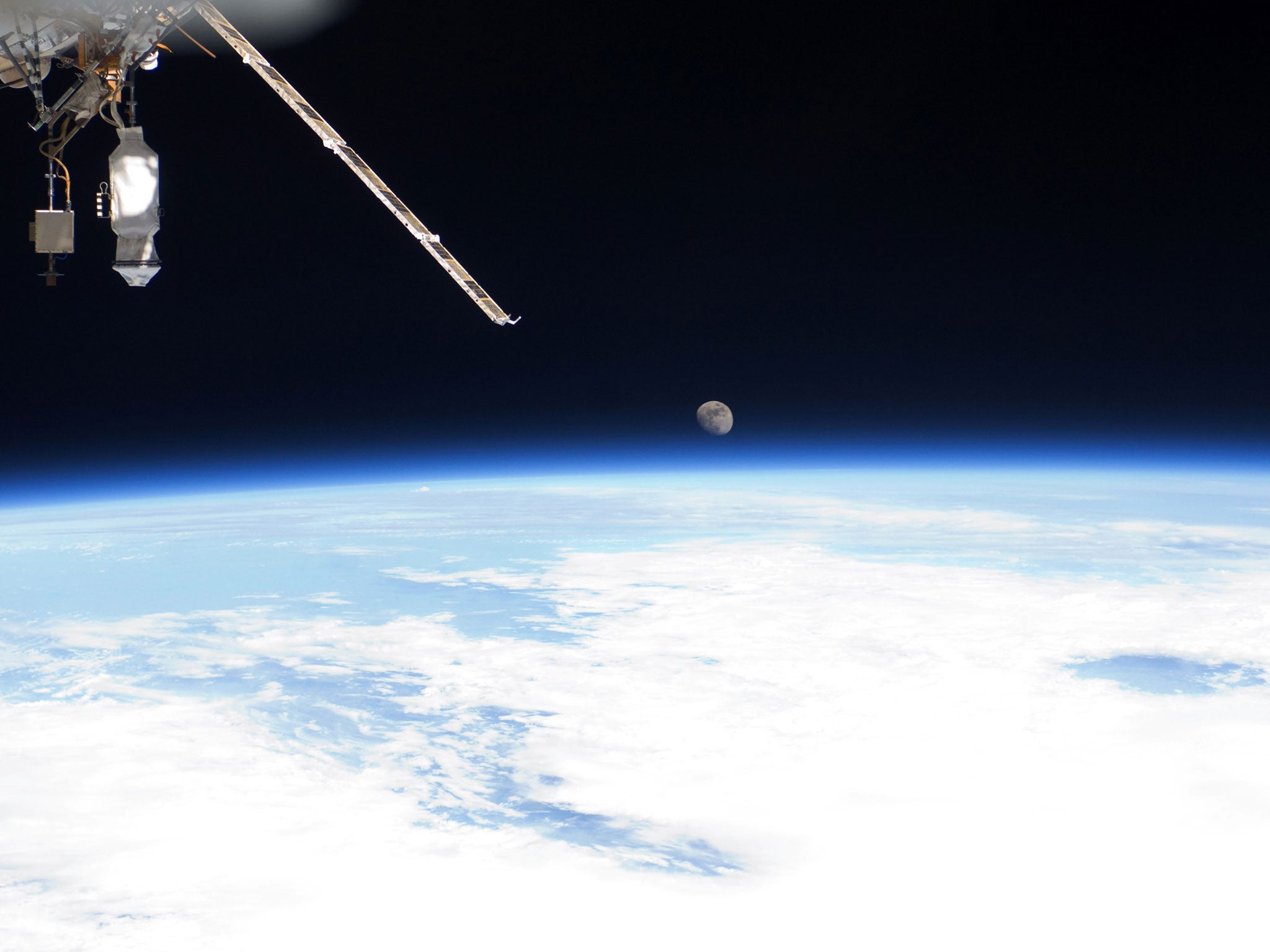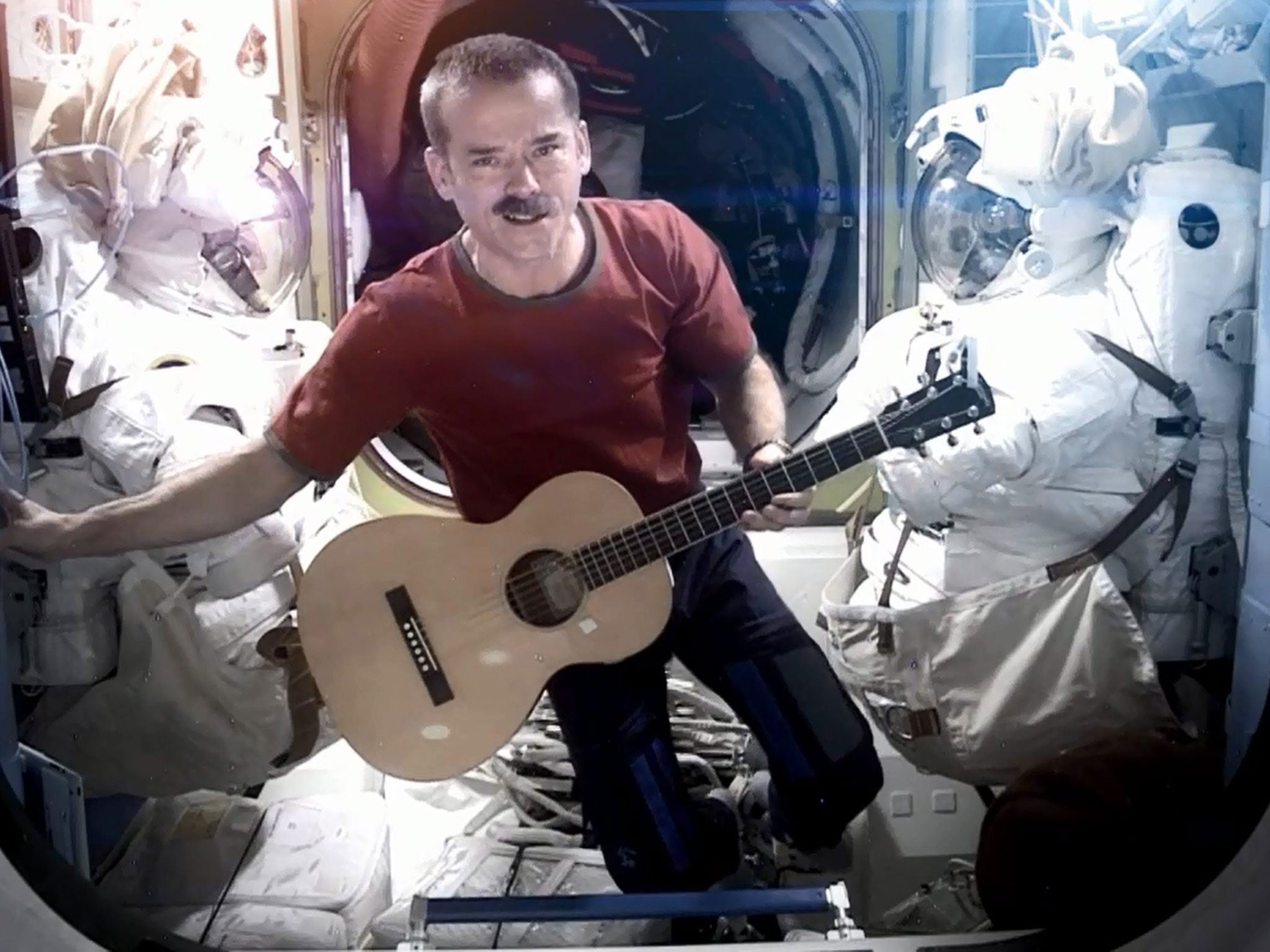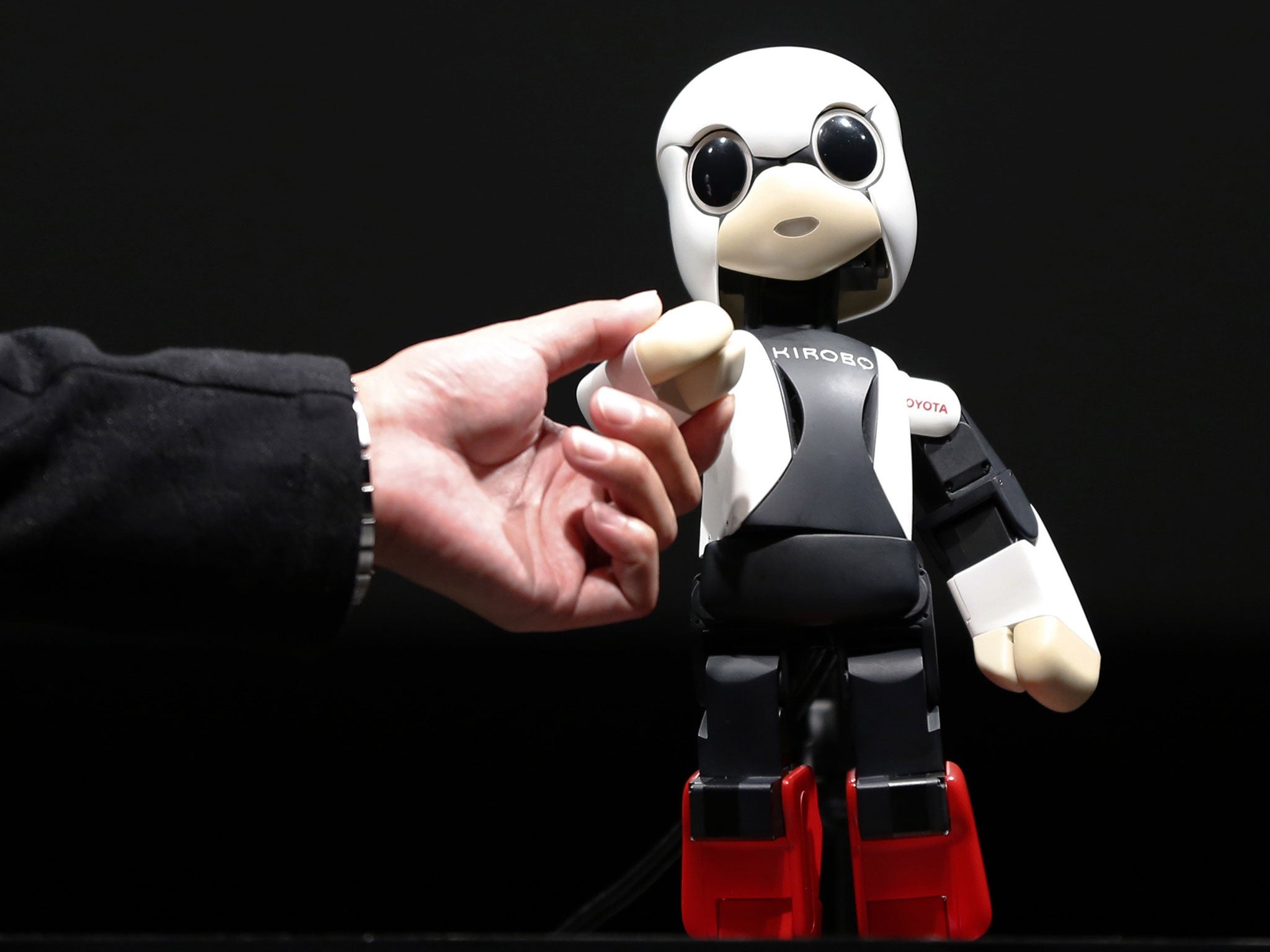Space: The Lonely Frontier
Of all the hardships astronauts face, lack of company can be the most daunting. Could a talking robot alleviate the problem? Tim Walker reports

Your support helps us to tell the story
From reproductive rights to climate change to Big Tech, The Independent is on the ground when the story is developing. Whether it's investigating the financials of Elon Musk's pro-Trump PAC or producing our latest documentary, 'The A Word', which shines a light on the American women fighting for reproductive rights, we know how important it is to parse out the facts from the messaging.
At such a critical moment in US history, we need reporters on the ground. Your donation allows us to keep sending journalists to speak to both sides of the story.
The Independent is trusted by Americans across the entire political spectrum. And unlike many other quality news outlets, we choose not to lock Americans out of our reporting and analysis with paywalls. We believe quality journalism should be available to everyone, paid for by those who can afford it.
Your support makes all the difference.Science fiction films frequently leave astronauts stranded in space with just a robot for company, from 1972’s Silent Running to 2012’s Prometheus. Now, reality is fast approaching fiction as a talking robot makes its way into space to serve alongside Japanese astronaut Koichi Wakata, who is to take over as commander of the six-person crew of the International Space Station (ISS).
Kirobo, whose name roughly translates as “hope robot”, was launched from a site in Japan this week on an unmanned supply rocket. When Wakata arrives at the ISS in November, his 34cm, 1kg companion will record the pair’s interactions, and relay controlroom messages to the commander and back. Their relationship will form part of a study to see if machines can help astronauts cope with extreme isolation. The loneliness of space will become a pressing concern if ever agencies decide to send humans to Mars.
Chris Hadfield, the Canadian former commander of the ISS, who returned to Earth in May, acknowledged the threat of loneliness in an online Q&A during his five months in orbit. “You’re a long way from Earth, you’re six people separated from the other six or seven billion,” Hadfield said.
When selecting a crew, he added, “We don’t choose people that need to have constant outside influence to stay comfortable with themselves.”
Nonetheless, the ISS astronauts remain in constant touch with home. “We have regular contact with Earth; we have surprise contacts with famous people; we have the ability to talk with our families and friends occasionally; we have email,” explained Hadfield, who took his own approach to staying in touch: an enthusiastic musician, on 6 May he led a sing-along with thousands of children in several different countries, via a live satellite link-up.

Nasa has its own psychosocial support team, which works with astronauts and their families before, during and after long missions. The group was even called in to assist with the rescue and rehabilitation of the 33 Chilean miners trapped underground for 69 days in 2010. Al Holland, a Nasa psychologist, said, in an interview around that time, that when selecting candidates, the agency looks for “mature people who have already dealt with [isolation], whether it’s on submarines or in polar or sub-sea settings. It shouldn’t be a first experience for them… We’ll work with them to just hone their skills.”
Dr James Cartreine, a researcher at Harvard Medical School, is involved in developing an interactive computer system to help astronauts combat depression during lengthy space flights. Using a large collection of pre-recorded video clips, the “Virtual Space Station” offers an approximation of human interaction with a therapist. Cartreine explains that it is rare for astronauts to share the emotional and psychological difficulty of their experiences in public, and so he and his team study similar groups, such as fire-fighters and polar expedition members, who live in mostly male-dominated environments, work as a coordinated team with specialist equipment, and live with the constant risk of dying on the job.
In 1984, a crazed Argentinian doctor burned down much of the Almirante Brown Antarctic base, to escape another winter on the remote continent. “The people at the Antarctic base may be the only group who actively think of themselves as being like astronauts; they often make the comparison,” Cartreine says.
The experiences of two men – a Russian and a American – highlighted the loneliness of the long-serving astronaut. In 1982, Soviet cosmonaut Valentin Lebedev kept a diary of his 211-day tour aboard Salyut 7. He argued with his only crewmate and with mission control. On one particularly low day, he wrote: “We don’t feel time anymore… I begin to count the days... I think our fatigue grows because our interest in work is fading. I don’t even want to look out the porthole any more.” Psychologists reading the diary concluded Lebedev was clinically depressed.
When US astronaut John Blaha spent 128 days on the Russian space station Mir, accompanied only by two Russian cosmonauts, he too complained of loneliness, saying in a space press conference in October 1996 that he missed his wife, Brenda. When the two were reunited in January 1997, Blaha told reporters, “The first month I was in orbit I kept longing for things that I loved here, and I finally decided I had to forget them. I had to psychologically say, ‘Maybe I’m never going to see them,’ and I had to work at forgetting them.”

A recent book by Lily Koppel, The Astronaut Wives Club, suggests that in the US space programme’s early days, it was the wives of the Mercury astronauts who suffered loneliness far more than their menfolk. Dotty, the wife of Apollo 16 astronaut Charlie Duke, claims she became suicidal with loneliness, although the couple are still together today, unlike many of the space marriages. “Charlie was a workaholic,” she told Koppel. “The space programme was all he thought about. I knew he would never be able to show me the love I needed or make me a priority.”
Duke was among the astronauts interviewed for In the Shadow of the Moon, an acclaimed 2007 documentary about Nasa’s Apollo missions. Chris Riley, one of the filmmakers, said that in all his encounters with the men who went to the Moon, “I never met a lonely astronaut. Even the Apollo command module pilots who orbited the Moon alone for days always complained about mission control yacking in their ears. Every astronaut I met always said they were way too busy to be lonely.”
One of history’s most isolated men supports Riley’s claim. Just seven astronauts served as Apollo command module pilots, sitting in lunar orbit as colleagues bounced across the barren surface below. While on the far side of the Moon, they were out of contact with the Earth, and further from it than any person before or since. Five are still alive, including Al Worden of 1971’s Apollo 15 mission, who recently told an interviewer that the three days he spent alone in the module were “wonderful”.
“I was alone but I was not lonely,” he said. “My background was as a fighter pilot, then as a test pilot so I was very used to being by myself. I thoroughly enjoyed it. On the backside of the Moon, I didn’t even have to talk to Houston, that was the best part of the flight.”
Subscribe to Independent Premium to bookmark this article
Want to bookmark your favourite articles and stories to read or reference later? Start your Independent Premium subscription today.
Join our commenting forum
Join thought-provoking conversations, follow other Independent readers and see their replies
Comments